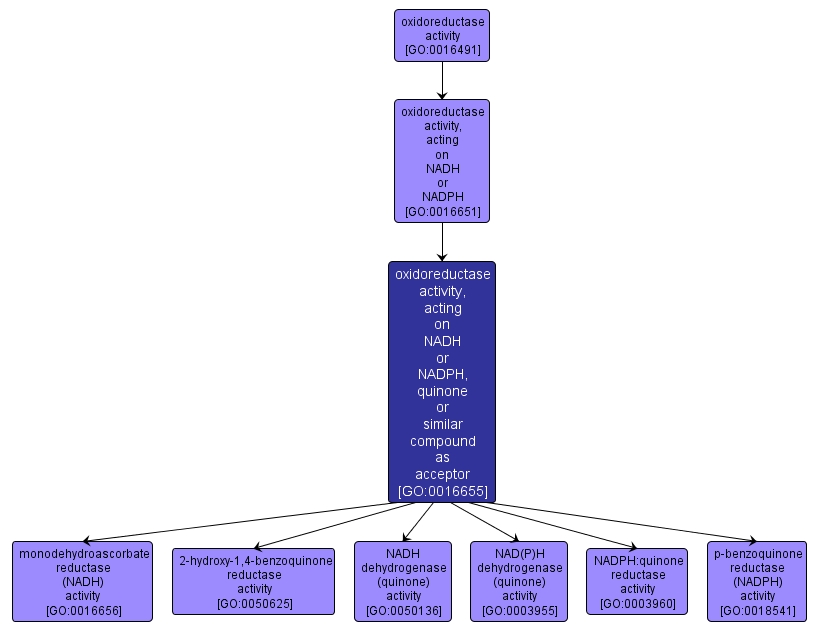GO TERM SUMMARY
|
| Name: |
oxidoreductase activity, acting on NADH or NADPH, quinone or similar compound as acceptor |
| Acc: |
GO:0016655 |
| Aspect: |
Molecular Function |
| Desc: |
Catalysis of an oxidation-reduction (redox) reaction in which NADH or NADPH acts as a hydrogen or electron donor and reduces a quinone or a similar acceptor molecule. |
|

|
INTERACTIVE GO GRAPH
|














